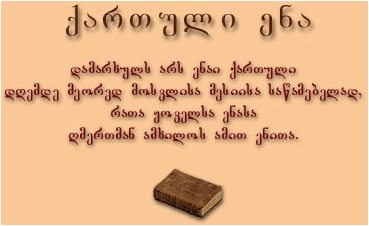The Georgian alphabet is one of the fourteen alphabets used in the world today.
9th century Georgian historical sources ascribed the adoption of Georgian script on a national level to King Farnavaz in the 3rd century. There are three types, or levels of development, of the Georgian alphabet: “Asomtavruli” (upper-case), “Nuskhuri” (lowercase), and “Mkhedruli” (secular).
The oldest surviving examples of “Asomtavruli” are inscriptions found in Bolnisi on the stones of Sioni church (493) and an inscription on a church built in Palestine by Petre Ibery (433). Also, Asomtavruli is the script of the oldest preserved work of Georgian written art, “Torture of Shushaniki”.
An intensive development of the Georgian state began in the 9th and 10th centuries. This caused an increase in the demand for spiritual as well as secular manuscripts. A need to produce a large number of documents provided a push toward a quicker and easier writing system writing that at first give rise to the “Nuskhuri ” alphabet, and then after the 10th century to the “Mkhedruli”. These two alphabets were used simultaneously. The church used “Nuskhuri”, and “Mkhedruli” was used for secular affairs.
“Mkhedruli” was used to publish the first Georgian edition of “Vepkhis Tkaosani” (Knight in Leopard’s skin) in 1712.
In the 1860s, under the direction of Ilia Chavchavadze, the Georgian language was reformed, and evolved to its present form.

Back |